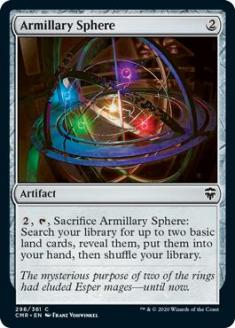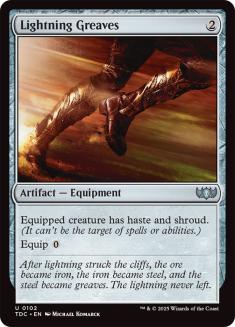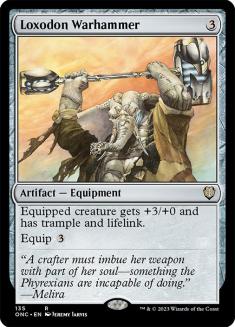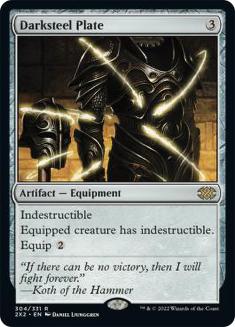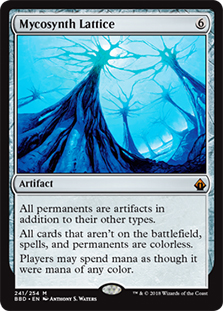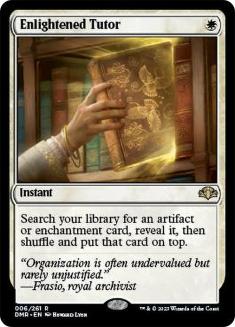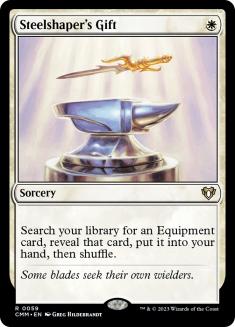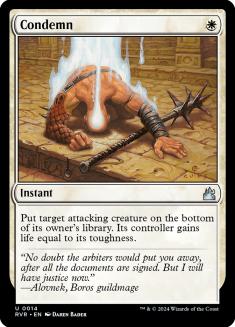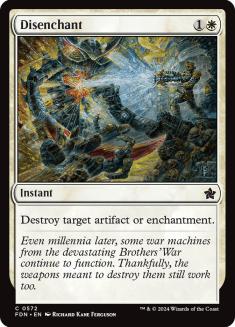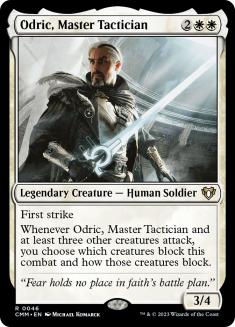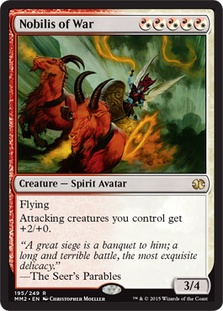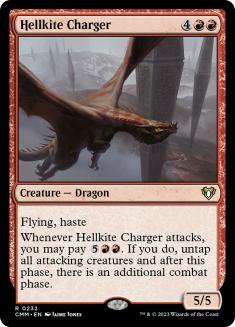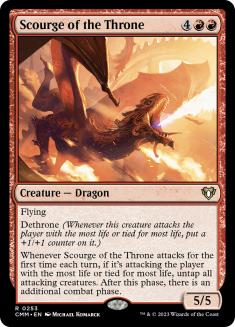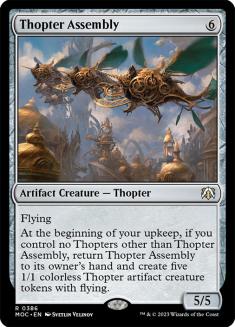Before we get started, I just wanted to chime in on the subject of Magic: the Gathering Online – in many ways MTGO is now my primary outlet for Magic,
since my other extracurricular activities keep me very busy and it is hard to find time on a regular schedule to get any gaming in. MTGO is great in that
it doesn’t require my free time to conform to the availability of others – if 11AM to 2AM is the time I’ve got, I can spend it online if that’s what I
want. But the new version of MTGO is an infinite disappointment engine right now, to the point where I have to ask whether the mistake I’m making is not
playing the wrong land or making the wrong pick, it’s logging into MTGO in the first place.
It’s not about the various user interface problems to me. Those are huge flaws, it’s true, and they all make it harder to get through a game for no good
reason whatsoever. The problem is that while the previous version had its flaws, it at least worked as a program. The instabilities were not with
the user interface or the software, every problem was server-side and as bad as those were – this is worse.
I had steadfastly refused to open the new client since they shut down the old one, but this weekend was the release of Khans of Tarkir online and I had a
few hours free and a hankering to get my draft on. I’ve been able to play exactly once with the new set so far, so I updated the software and signed in,
wandered over to the Play Lobby and signed up for a draft. Things started poorly, as they are wont to do when we’re telling MTGO tales these days; my first
pick was a goofgrab because the click I’ve been using for something like a decade now to reserve cards while I think over my choices now highlighted the
card uselessly. I adapted quickly and didn’t even really mind the lost first pick – it was a double-blue card and I was passed Duneblast and then led
merrily down the Abzan Way into a pretty sweet deck with a lot of power to it… even a Wingmate Roc, so I was very happy even though it didn’t have much
in the way of removal.
I lost game 1 to the fact that I fell too far behind and couldn’t outrace my opponent’s unblockable creatures out of his four-color special, Jeskai +
Temur, then I won the second game on the back of Wingmate Roc because it has broad shoulders and a mighty racing ability tacked on for no especially good
reason. Then I clicked to go sideboard for game 3 and MTGO disappeared. Not ‘froze,’ not ‘lagged as it waited for a new window to load,’ the program closed
with no prompt or warning whatsoever, for no explicable reason.
I logged back in, but because the program’s a massive memory-hog, it took longer than the presumably three minutes I had for sideboarding to time out, and
then when I re-logged it brought me to the draft and said our third game was “in progress.” No problem, right? Every other version of MTGO has had some lag
here too, but you’ll get reconnected to your game and it’s not a big deal. I had eighteen minutes on my clock still because I’m fast with the program, but
instead of loading the game it just let me watch the screen for ten minutes as I timed out of the round.
To add insult to injury, the Prerelease queues are all Swiss style, so I figured I’d file my compensation request but still try and salvage something out
of my experience with this sweet little deck of mine. Nope. When the second round pairings went up, I’d been dropped. GG, MTGO, GG.
Magic Online just doesn’t work. I’ve been a steadfast user for a decade now – I started using it back during Kamigawa Block to draft half a dozen
times a day, and I considered that a good experience at the time even though most tend to conflate that set as the modern equivalent of Fallen Empires. I
don’t have an especially expensive collection online, but I do have a solid one, and I have no problem paying money to play Magic on the computer because
I’d just be paying Magic to play in real life instead, and this fits my schedule’s discontinuities far better. So I’m not the ideal user for them, but I’m
pretty close to one – I recently put another 250 tickets on my account, so they just got another $250 in one bulk payment to keep me drafting when Vintage
Masters came out, only to feel burned and betrayed when a week later they announced that I’d be forced to use their non-functioning beta client instead.
They get money out of me, and have for a decade, even if they don’t get as much out of me as a top-end client… so I’m the kind of customer they want to
hang on to, they can ignore the opinions of everyone who’s “gone infinite” because they’re not putting money in the thing, it’s people like me feeding
quarters into the machine that are what keeps the game playing.
And yet in its current state – it’s a memory-hog that shuts down your computer, no matter how fancy and expensive, just by its basic operation. My laptop
at home isn’t a gaming computer, so it’d make sense to me if it didn’t work perfectly, but my work computer is half-supercomputer – the processing power
built into that thing operates a hugely complicated piece of scientific equipment with ease, and that computer can’t run the new client for more
than an hour or so without the bleeding memory issues cramming down its free cycles and grinding the hamster wheel to a halt. The program just does not work, and I have to wonder – how much business are they losing because they don’t have a functioning client? I know I’m not the only
one who’s walked away and taken their wallet with them for a vacation away from the Wide Beta Client, and I have to assume this flock of gamerfolks “going
Galt” on them has a significant impact on the bottom line. Fixing the client by spending a couple million dollars to get the software professionally
produced would be expensive, sure, but would it be as expensive as not doing so?
I think not. And I figured I should stand up and say something, to “come out of the closet” as a New Client Hater, for the most pragmatic reason possible –
It. Does. Not. Work. And that is keeping me from playing more Commander in those few spare hours I manage to find from time to time, so I figured it was
time to use what little platform I have to address the issue.
Now that that’s out there, it’s time for our letter:
|
Dear Azami,
Before anything else, I just want to let you know that I’m a long-time reader of these articles, and they’re definitely my favorite on the site. Commander
This is definitely my first foray into a deck that doesn’t contain blue or black. But, as an adventurous sort, I decided to move away from a control- or The deck as follows: Creatures: Artifacts: Instants, Sorceries, and the Lone Enchantment: Lands: 8 Plains
When I was building this deck, I didn’t really have too much to go on, except “put in creatures that are good and artifacts that do things.” Right now, the
My budget isn’t too much of a question, I’d be glad to spend a bit on individual cards, but, as a college student, I definitely do not have an unlimited Yours Eternally, Robin |
Beating down is hard to do in Commander. You’re arguably using the worst two colors in the format, though I know people tend to think black and white are
pretty closely tied – it’s just that green and blue are clearly miles ahead, while red is back in the Stone Age compared to what the other colors can do if
you try. But a good beatdown deck can transcend these limitations – even the weakest color by itself can put up a credible fight, as I well know since one
of my favorite decks is a
finely-honed Godo, Bandit Warlord deck that takes the whole “red is weak” meme and turns it on its ear by playing a multifaceted and resilient
beatdown game. That’s the kind of game I feel you want to be playing with your Commander, and we can get there if we try.
The most important parts of this exercise are knowing your role and building your curve. “Knowing your role” means that you’re a beatdown
deck, not a control deck, so you can’t play board-controlling cards in large quantities and expect everything will work out fine – blowing up your own
board is counter-productive, and we aren’t willing to accept that as a natural result of playing your own game. And “build on a curve” is self-explanatory
– you’ll want good drops at each cost up and down the curve so that you can put early pressure on and keep it there while you power into the midgame. Being
mindful of the card count is important, as is being resilient and being able to build back up from opponents messing with your side of the board (as,
inevitably, they shall be wont to do). Any missteps anywhere along these vectors will prevent you from reaching your objective, which is to have a good,
fun deck that can win its fair share of games if you play it right. That’s the sweet spot for me, being in every game so that it’s my decisions in
the course of the game that matter rather than a deckbuilding flaw or power-level mismatch, and to get into that spot we need to play adequately-powerful
cards, be able to recover from setbacks at least some of the time, and keep cards flowing into our hand so that we always have plays we can make and thus
credible options to take turn after turn.
The good news is that your deck is most of the way there already. One- and two-drop creatures are hard to make worthwhile in Commander, unless they’re
overpoweringly strong like Stoneforge Mystic. That means the three-through-five slot are where your real beatdown curve begins, and you’re aiming for
six-drops as the top of your curve – which I’m going to extend up as far as eight mana, for just the right Dragons.
Let’s begin with your lands:
Out:

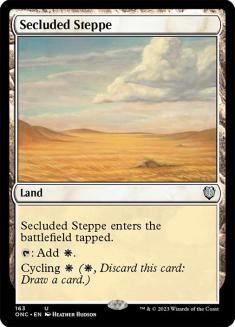
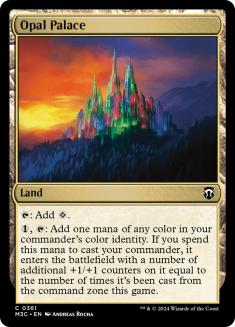



In:
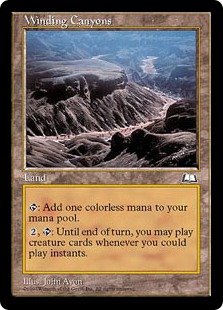
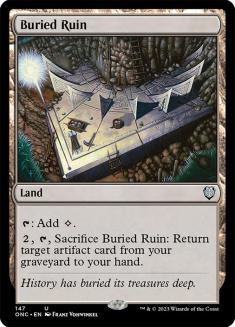
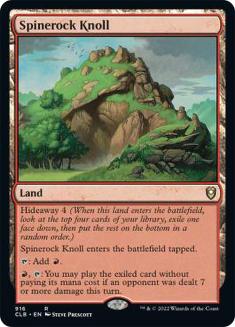
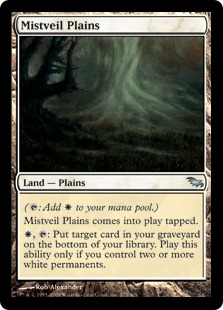
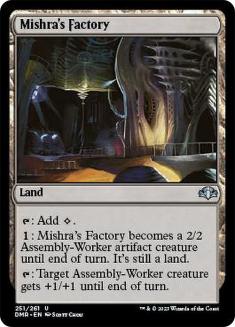
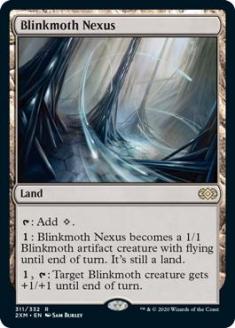

I felt 35 was just a little bit too short on lands, and figured so long as you were getting additional spell-like functions out of them that adding one
would be a solid improvement. You could go further down the list when trying to figure out more ways to get +1 artifact towards your Metalcraft out of your
lands, but Inkmoth Nexus’ poison damage is un-fun for the format, and once we start getting to stuff like Urza’s Factory and Stalking Stones it’s too much
mana for too little of an effect. Mistveil Plains works well with Sunforger, while Spinerock Knoll and Buried Ruin provide surprisingly potent spells later
in the game – always a solid benefit when stapled to an otherwise-innocuous land. I’d rather have an option to turn my land into a good spell later than
the ability to cycle it, unless I’m recurring cycled things from the graveyard somehow, and even a mediocre spell off of your Spinerock Knoll is free as far as your draw step was concerned.
Opal Palace came out because this is not a deck that can expect to get to the highest reaches of the mana curve and still be competitive – if you’ve got
twelve lands in play, we have to start wondering why you’re not dead yet or, worse yet, why you weren’t able to win the game yet. I don’t have a problem
with the mana-sink side of things, but I do insist that any mana sinks be worthwhile – and Winding Canyons certainly is, as it lets you start deploying
threats at the end of opponents’ turns so that you don’t lose too many cards to sorcery-speed mass removal. It’s like a weird pseudo-version of haste;
instead of speeding you up by half a turn it slows you down by half a turn instead, but the same benefit is there to be gained – you get to attack with
your creature before someone gets to Wrath. In this case, you’d rather slow down than speed up because then you’ll have untapped mana you can use for equip
costs, so later in the game you’ll play the dodge-mass-removal game and start hitting in big chunks every other turn rather than throwing things out there
and hoping they stick (but knowing they probably won’t).
The Steel Remains
Artifacts tend to feel like an extension of your manabase, but in this case they’re largely going to be the weapons you give your team to beat down with.
I’m not going to tell you to add a Sensei’s Divining Top, but especially for a deck that cares about artifact count, it’s the most important addition you
can make if you haven’t already. I understand this is a super pricey uncommon these days and the price is getting unreasonable, but you could pick
literally any of the cards I’m about to tell you to add, cut it at random and add a Sensei’s Divining Top… and not only will it be a better addition, it
will be clearly and inarguably so. That I’m not suggesting you race to get one is due to your non-infinite budget, you should definitely consider it
strongly if you’re able to acquire one somehow. It’s on the very short list of cards basically every Commander deck is better with, and regardless of
whether it’s in this deck or another, it will serve you well in the future should you get one.
That said, let’s make some cuts:
Out:
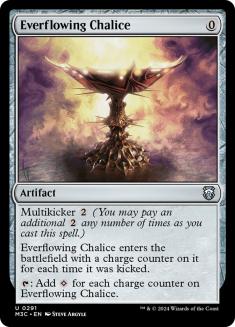
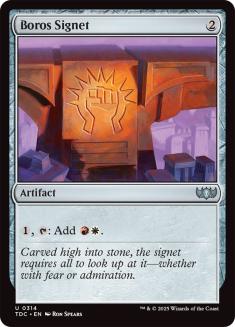
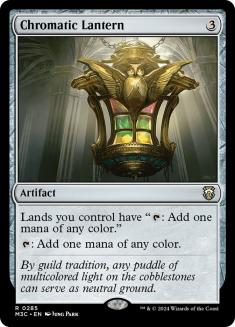
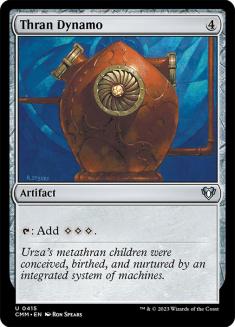
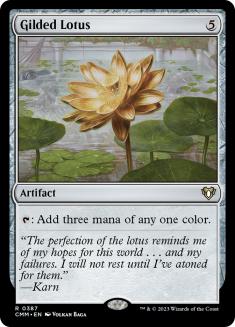

The top row is cutting your mana rocks – you’re not really using the acceleration, especially the more expensive (but also more powerful) accelerants like
Thran Dynamo and Gilded Lotus. Land drops are more stable and the name of the game isn’t just to get more artifacts into play, it’s to do so as stably as
possible over the course of a long game and preferably with as little real loss to your gameplan when (not if) a destroy-all-artifacts effect wipes the
board. There’s too much stuff like Oblivion Stone or Austere Command that routinely gets played for us to think that these are going to be stable mana
sources, so I’d rather focus on making regular land drops and using these in a more focused manner.
The equipment cuts are largely because they’re duplicative – when you have multiple ways to access a specific equipment out of your deck over the course of
a game, you don’t need a copy of Swiftfoot Boots and a copy of Lightning Greaves, and I’d rather play the marginally more expensive one in order
to reap the benefits of hexproof over shroud. Warhammer’s strongest side is the lifegain, unless you really need access to trample somehow, and Batterskull
provides that already on a much-better card, so we’ll defer to it instead. And Armillary Sphere unfortunately just gets it exactly wrong – yeah, you want
the lands, but your artifacts are supposed to be things you want in play, sacrificing them to get a beneficial effect just gets in the way of what we’re
trying to accomplish.
In:
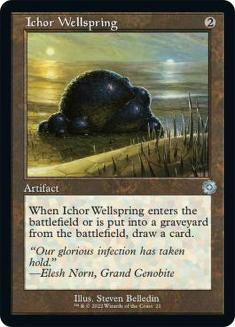
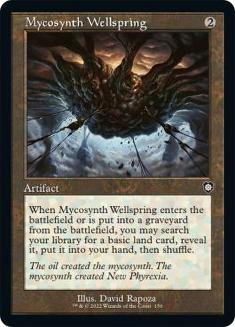
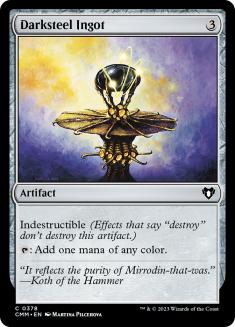
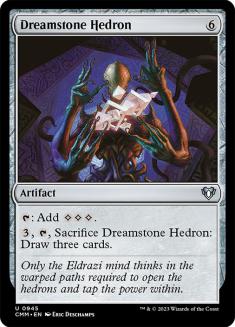

The Wellsprings may seem underwhelming, but they’re exactly the sort of thing you want–+1 artifact in play for very little mana and no real card
investment, with a bonus: when things blow up, you put another card in your hand. Cards-in-hand is very important to a deck like this being able to grind
through later stages of the game, and while you aren’t really interested in the mana part of the Hedron barring a very few additions we’re going
to make later, you do want the sometimes +1 towards metalcraft on a card that can turn into a Harmonize when the mana is less valuable than the
cards. And here we won’t even mind sacrificing it – drawing the cards will find you a replacement artifact, while sacrificing the Armillary Sphere just
gets you two lands.
In:
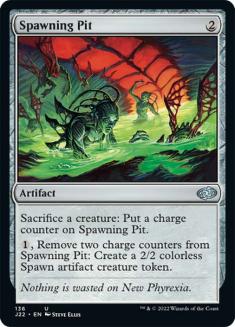
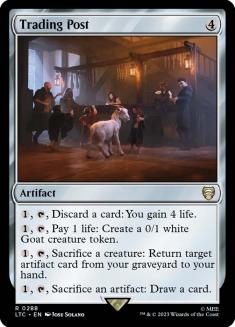
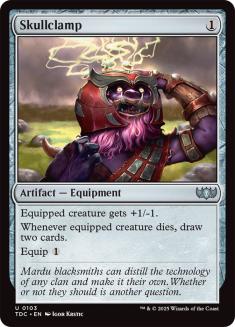
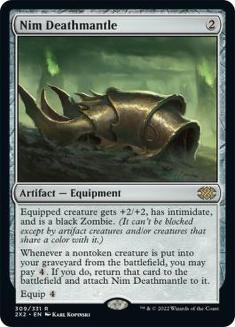
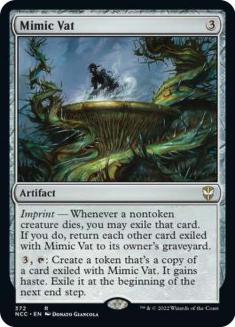
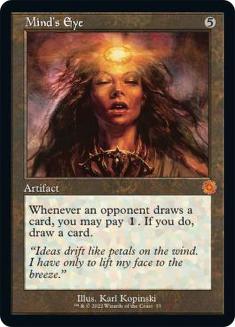

With a strong token strategy already present in your deck thanks to the fact that Jor Kadeen super-sizes your combat step, Spawning Pit will be a strong
way to keep a critical mass of tokens alive against opponents who do pesky things like kill your stuff… and it is also amazing at turning up
your artifact count, since the tokens it provides all count as artifacts as well. The other five cards focus on card advantage instead of keeping an
advantageous board presence: Skullclamp and Mind’s Eye draw you more cards in order to keep you relevant in the later stages of the game, Mimic Vat and Nim
Deathmantle are recursive effects you can use to grind out long games and keep the best creatures around even in the face of stiff resistance, and Trading
Post is just… Trading Post. It can add tokens to your swarm, though admittedly they have zero power, and thus, they shouldn’t feel like they
beat down as hard as they do – or is it bleat down? (I bet Brad Nelson would know – since I bet he’s also made the exact same awful pun,
probably on camera.) So it’s a token generator alongside your token-liking things, but it can also serve to draw cards if an artifact is dying anyway or
could die and provide some beneficial effect – like a Wellspring, fancy that. And then there is the trade-critters-for-artifacts mode that just lets you
keep all your best threats on the table, giving you ways to buy back spent Swords that just otherwise wouldn’t be available to you.
Spells Like Teen Spirit
Sure, let’s keep the awful humor train rolling, shall we? (This may or may not be solely due to the fact that Internet ‘news’ sources recently revealed
that the baby from the cover of Nirvana’s “Nevermind” is now legal to drink – and thus I feel impossibly old lately.)
Moving on to your spells, I want to cut the mass removal that wasn’t working, maybe play some mass removal that wouldn’t get in the way of delivering the
beats, and otherwise just balance things out so that your Sunforger will be a high-functioning utility belt – I consider it to be a power card in the
Commander format, probably in the top one hundred cards we’re allowed to play, and that’s a darn powerful list now that we’re well past ten thousand unique
Magic cards. So long as you include the right targets for it to pull out, it will protect your stuff and end the game right fast… and even speed up your
beatdown clock too while we’re at it.
Out:
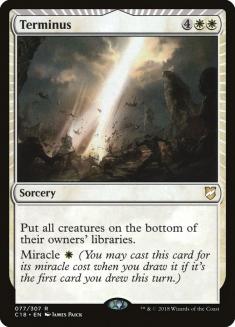

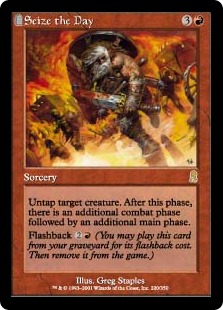
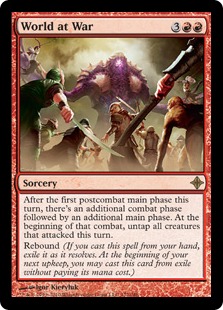
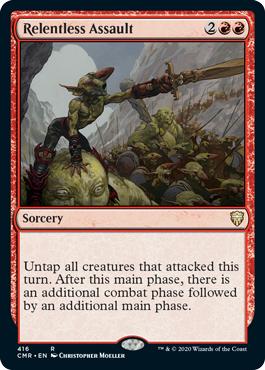

You don’t need the extra removal – you already have two tuck cards without Condemn, and Disenchant is just a less-powerful version of Wear // Tear anyway
these days – and I don’t think you need any one specific artifact so badly that Enlightened Tutor will be worth going down a card to get the effect. You
have a lot of equipment and a lot of ways to access them already, so you’re likely to have either a powerful equipment card or a way to find one in most
hands even without the Tutors, and as far as Steelshaper’s Gift is concerned I am going to give it an upgrade once we get over to the creature section. For
a comparable cost to the Gift and the cost of your average Sword, you can get the equipment right into play and a body to work with besides, so
we’ll upgrade that card rather than cut it.
And I just don’t believe the combat-doublers are going to be worth it; I’ve seen a lot of people try and play in this space, and while Savage Beating
carries its weight that’s because it quadruples a combat, not just doubles it. Enough of your combat force is one-toughness tokens that it would be
reasonable to expect that a fair number of your attackers won’t survive key combats, so having a doubler to give you another combat phase is less important
than having more ways to protect your team outside of the combat phase so you can get more attacks in naturally.
We’re also going to just straight-up cut two slots; I want one more creature (as we replace the Steelshaper’s Gift with a Gift-with-legs) and we added a
land, so the slots have to come from somewhere and this section makes the most sense.
In:
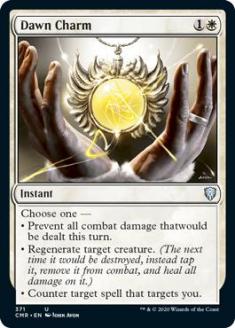

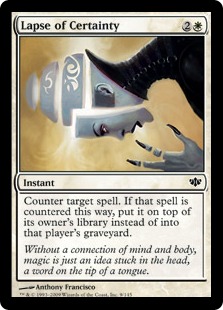
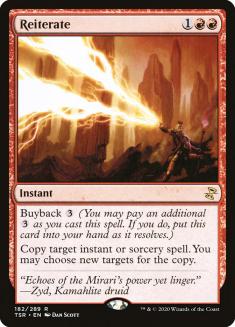

These are your extra Sunforger targets, and thanks to the two Charms they let you:
- Pass a key attacker Double Strike for the turn, which will be a lot like the Relentless Assault effects we cut
- Potentially kill a planeswalker
- Make your entire board indestructible in response to a mass removal spell, effectively countering it with benefits since it will still clear
everyone else’s stuff - Fog a key combat phase, i.e. “not die this turn”
- Regenerate a key creature that is targeted by a removal spell
- Counter a spell that targets you
Add in Lapse of Certainty as an actual-Counterspell, even if it is not a very good one, and Reiterate to go crazy by being able to duplicate any
spell that would be beneficial to you, to get a crazy amount of options out of not very much space at all. And about the last thing anyone will expect out
of a red-white deck is for their spell to be countered, so you can play an intriguing tactical game where they are supremely confident their spells will do
exactly what they’re supposed to and they actually need a spell to resolve for them to survive – I’ve gotten so many powerful spells with a clutch
Lapse of Certainty that I can’t even begin to name them all, with pedigrees like Insurrection or Tooth and Nail.
Speaking of…
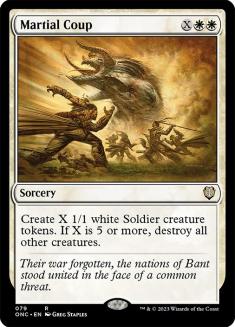
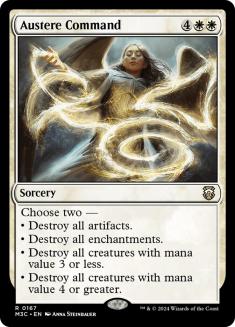
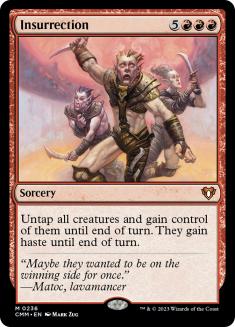

Selective mass removal, board wipes that either leave your side of the table alone or give you something worthwhile enough to make you not mind that your
stuff is getting killed too. These will serve you much better than the Wrath-type effects you were playing. And Insurrection just says “kill a player or
two,” giving you a late-game answer to very messy problems that you can potentially draw to if you’re being ground out by a more midrange-y deck that
trumps your threats. While it’s true that beatdown decks favor inexpensive mana costs, for a big enough haymaker you can afford the expense – so long as
it’s only a few cards, in this case you’ll end up with just four cards peaking over the six-mana mark, each of them incredibly worth it.
Turn These Sideways
I liked most of your creature choices, and I definitely liked the deck’s natural mana curve settling in the sweet spot between three and five mana for its
power attackers. That said, we can do better than a few of them just from a tactical level and we’ll upgrade them to true powerhouses – we want to end up
with a good number of standalone threats so that our major creature drops are all strong draws by themselves in the later stages of the game. Here’s where
I went with this:
Out:
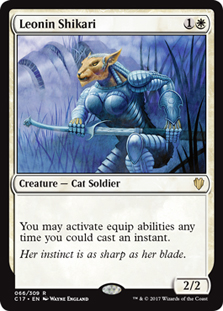
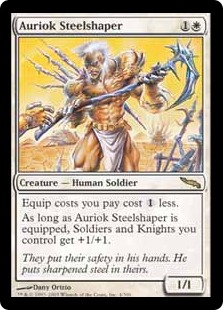
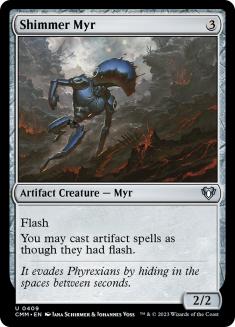

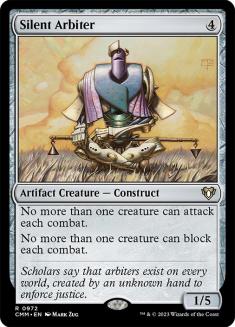

We switched forms of haste so that Anger is less important, and the pump side of Auriok Steelshaper and Nobilis of War are something your Commander already
excels at – they’re not really special. Shimmer Myr is better when your artifacts aren’t equipment, so it’s not really doing enough here to warrant its
inclusion, and I’ve never been sold on the idea that Leonin Shikari is a powerful enough effect to warrant playing an otherwise Grizzly Bear body. Sure,
it’s excellent with hexproof, shroud, and protection – but it’s lousy at attacking, blocking, and surviving sweepers, so the card winds up to be less
powerful than it looks since it mostly just incentivizes someone to Wrath on you since their other removal is less prone to work.
I’m still not sold on the bonus combat phases, so the dragons that grant them get cut, and I’d rather find a more immediate token generator than Thopter
Assembly if that’s possible. Other than that we’ve just got Silent Arbiter and Odric, the control-combat cards that don’t really seem like they’re in place
here. You want to pump the team and swing with everybody, not limit yourself to just one attacker, and in Commander you’ll have enough opponents to choose
between attacking that you don’t really need to control the blocking side of things – you can usually just choose to attack the opponent without good
blockers instead.
Adding back in, we get the following:
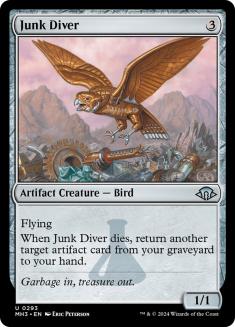
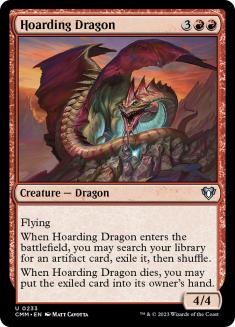
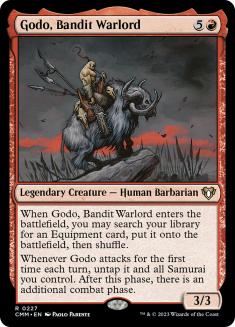
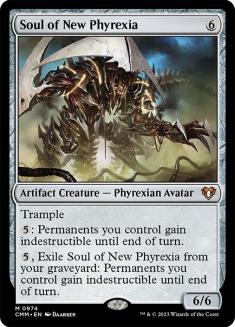
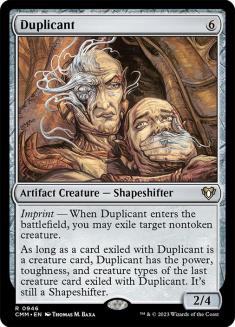
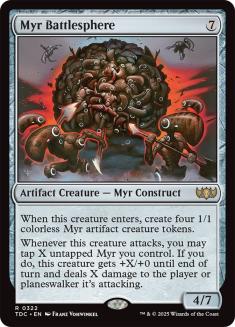

These all increase your artifact count while doing stuff we are already interested in – or even providing some card advantage while we’re at it. Myr
Battlesphere is pretty absurd with your Commander online, since Jor Kadeen passes Team Battlesphere +15 power, while Duplicant and Soul of New Phyrexia are
just solid artifact creatures that either affect or protect the board. Killing the best threat on the table is a solid ability to add to your lineup, but
having your removal spell leave a creature that is the same size as that threat is excellent when you’re beating down – and the Souls all start with hefty
stature and can beat down well even before you add their abilities, which in this case serves the same function and purpose as Boros Charm did.
Junk Diver, Hoarding Dragon, and Godo are all bodies that also care about card advantage; one of them puts your best equipment card directly into play
right away, while the other two put a key artifact into your hand when they die instead. Godo even has a built-in Relentless Assault attached to him, but
that’s just tacked on for free rather than the point of the card, so it’ll be a fun add-on without having to commit card slots to trying to accomplish that
anyway. (And that Boros Charm you can now find with Sunforger giving double strike to a key creature will be surprisingly like those Relentless Assault
effects we cut, so the deck can still play that way even without playing those specific cards.)
In:
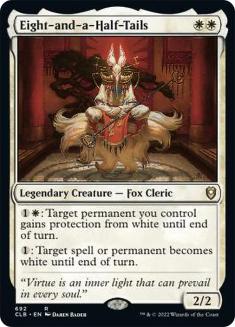
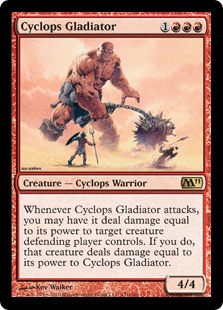
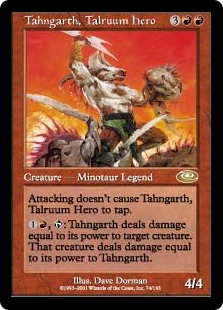
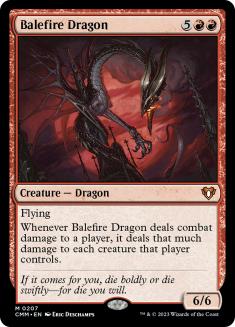
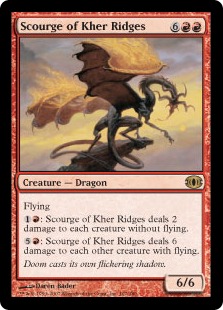

8.5 is there to protect your permanents, which I’d happily continue to commit more slots towards, but we’re starting to run out of good effects that do so
(short of spending a ton of mana to turn all of our artifacts into
Darksteel) so it’s time to focus more on beating down than stabilizing our board. These last four all focus on passing around damage to opposing
creatures, either by fighting them individually or just throwing wave after wave of direct damage their way and seeing what happens. My favorite combo from
my Godo deck sadly didn’t make it in here – Scourge of Kher Ridges wearing a Basilisk Collar is pretty tough for any creature deck to beat – but you can
still do gross things like equip Batterskull to a Balefire Dragon so I’m sure you’ll enjoy the side effects you can make happen with these creatures and
your suite of Swords. Giving the Scourge protection from red lets you use the “Tumble” ability safely, not just cast the “Rough” side of the card, while
the rest of your Swords can help make Balefire Dragon unblockable (and add two damage while we’re at it!) and make sure Tahngarth and the Gladiator win all
fights.
Putting it all together, we get the following:
Creatures (27)
- 1 Eight-and-a-Half-Tails
- 1 Solemn Simulacrum
- 1 Godo, Bandit Warlord
- 1 Tahngarth, Talruum Hero
- 1 Duplicant
- 1 Junk Diver
- 1 Scourge of Kher Ridges
- 1 Stonehewer Giant
- 1 Stoneforge Mystic
- 1 Cyclops Gladiator
- 1 Hoarding Dragon
- 1 Sun Titan
- 1 Steel Hellkite
- 1 Myr Battlesphere
- 1 Spikeshot Elder
- 1 Mirran Crusader
- 1 Hero of Bladehold
- 1 Puresteel Paladin
- 1 Balefire Dragon
- 1 Restoration Angel
- 1 Silverblade Paladin
- 1 Zealous Conscripts
- 1 Aurelia, the Warleader
- 1 Hellkite Tyrant
- 1 Soul of Theros
- 1 Soul of New Phyrexia
- 1 Goblin Rabblemaster
Lands (36)
- 7 Plains
- 1 Mishra's Factory
- 7 Mountain
- 1 Hall of the Bandit Lord
- 1 Temple of the False God
- 1 Great Furnace
- 1 Ancient Den
- 1 Winding Canyons
- 1 Battlefield Forge
- 1 Darksteel Citadel
- 1 Blinkmoth Nexus
- 1 Boros Garrison
- 1 Sacred Foundry
- 1 Kher Keep
- 1 Spinerock Knoll
- 1 Windbrisk Heights
- 1 Mistveil Plains
- 1 Rugged Prairie
- 1 Command Tower
- 1 Buried Ruin
- 1 Clifftop Retreat
- 1 Slayers' Stronghold
- 1 Cavern of Souls
- 1 Temple of Triumph
Spells (37)
- 1 Swords to Plowshares
- 1 Sol Ring
- 1 Darksteel Ingot
- 1 Sword of Light and Shadow
- 1 Sword of Fire and Ice
- 1 Skullclamp
- 1 Spawning Pit
- 1 Mind's Eye
- 1 Oblation
- 1 Insurrection
- 1 Mind Stone
- 1 Sunforger
- 1 Reiterate
- 1 Dawn Charm
- 1 Austere Command
- 1 Lapse of Certainty
- 1 Martial Coup
- 1 Path to Exile
- 1 Dreamstone Hedron
- 1 Mimic Vat
- 1 Nim Deathmantle
- 1 Sword of Feast and Famine
- 1 Ichor Wellspring
- 1 Mirrorworks
- 1 Dispatch
- 1 Batterskull
- 1 Sword of War and Peace
- 1 Mycosynth Wellspring
- 1 Chaos Warp
- 1 Swiftfoot Boots
- 1 Trading Post
- 1 Vandalblast
- 1 Boros Charm
- 1 Assemble the Legion
- 1 Wear
- 1 Hammer of Purphoros
- 1 Spear of Heliod

As always, for participating in this week’s Dear Azami you will receive a $20 coupon to the StarCityGames.com Store, which should help keep the
budget down. A fair number of the cards here are pricey – the median price is 2.49, because we’re adding more in the way of older rares rather than
sticking to newer cards, commons, and uncommons – and altogether totals just a bit shy of $110. And that’s without addressing the expensive but valuable
addition of a Sensei’s Divining Top – but I remember my years as a savvy Magic-playing, Hot Pocket-munching college gamer, and trust you can figure out
some reasonable mix of trading for newer things and making purchases only for the things you cannot find nearby, like “who has a Tahngarth, Talruum Hero in
their trade binder?” We kept it reasonably tight compared to where it could have been – the highest-priced changes we’ve ever made started with Cassidy
telling someone to splurge and get himself a Mana Crypt – and we’ve made sure that all the expensive additions are high-impact things that will all
markedly improve your deck and have a high impact on the games you play.
Priced out individually, here is what all of our changes would cost you:
| Card: | Price: |
| Lapse of Certainty | 0.15 |
| Mycosynth Wellspring | 0.15 |
| Darksteel Ingot | 0.25 |
| Ichor Wellspring | 0.25 |
| Cyclops Gladiator | 0.49 |
| Dawn Charm | 0.49 |
| Dreamstone Hedron | 0.49 |
| Hoarding Dragon | 0.49 |
| Spawning Pit | 0.49 |
| Trading Post | 0.49 |
| Myr Battlesphere | 0.75 |
| Buried Ruin | 0.99 |
| Junk Diver | 0.99 |
| Nim Deathmantle | 0.99 |
| Tahngarth, Talruum Hero | 0.99 |
| Insurrection | 1.49 |
| Boros Charm | 2.49 |
| Mistveil Plains | 2.49 |
| Mimic Vat | 2.99 |
| Reiterate | 2.99 |
| Spinerock Knoll | 2.99 |
| Mishra’s Factory | 3.99 |
| Scourge of Kher Ridges | 3.99 |
| Balefire Dragon | 4.99 |
| Godo, Bandit Warlord | 4.99 |
| Martial Coup | 4.99 |
| Soul of New Phyrexia | 5.99 |
| Austere Command | 6.99 |
| Duplicant | 6.99 |
| Mind’s Eye | 6.99 |
| Skullclamp | 6.99 |
| Eight-and-a-half-Tails | 7.99 |
| Winding Canyons | 8.99 |
| Blinkmoth Nexus | 11.99 |
Here’s hoping that you find your new beatdown experience more streamlined and enjoyable, able to deploy threats quickly and survive a longer game if that is what you need to do. Commander is a format that favors the patient and the tactically-minded, and this build of your deck should have the added complexity it takes to push across damage even in the end stages of the game.
Want to submit a deck for consideration to Dear Azami? We’re always accepting deck submissions to consider for use in a future article, like Fernando’s Brimaz, King of Oreskos deck or Dylan’s Anafenza, the Foremost deck. Only one deck submission will be chosen per article, but being selected for the next edition of Dear Azami includes not just deck advice but also a $20 coupon to StarCityGames.com!
Email us a deck submission using this link here!
Like what you’ve seen? Feel free to explore more of Dear Azami here, in the Article Archives! Feel free to follow Sean on Facebook… sometimes there are extra surprises and bonus content to be found over on his Facebook Fan Page, as well as previews of the next week’s column at the end of the week!

